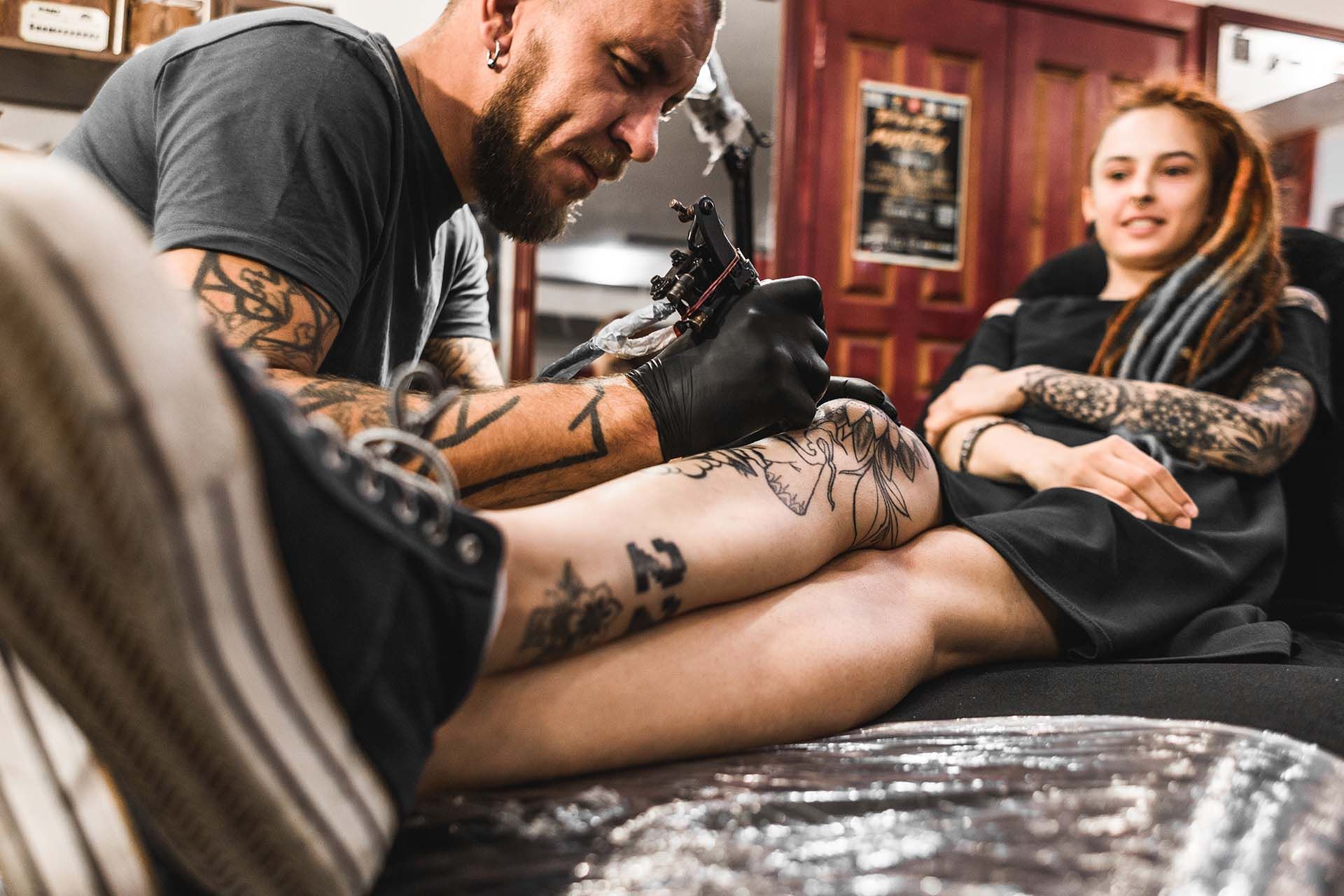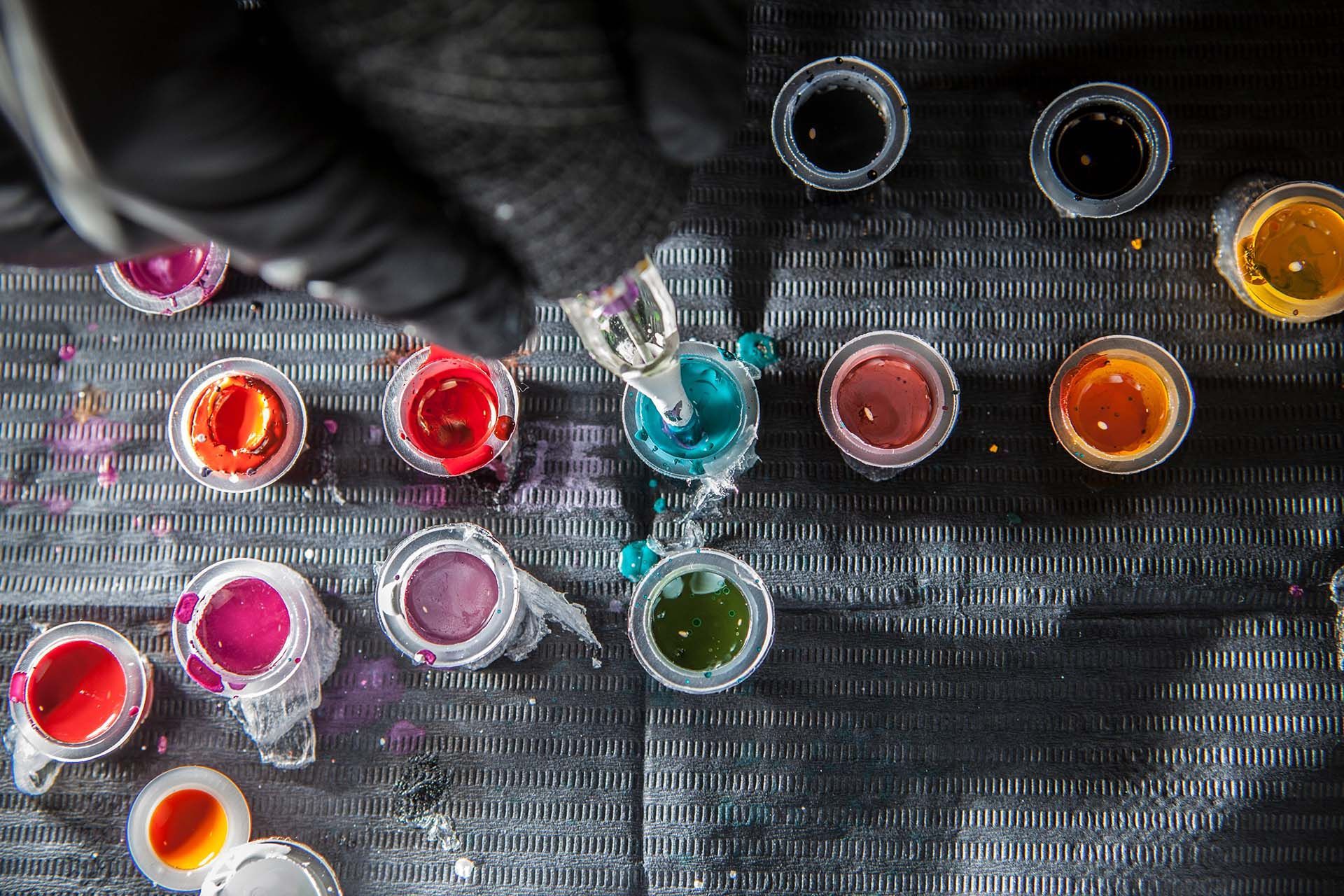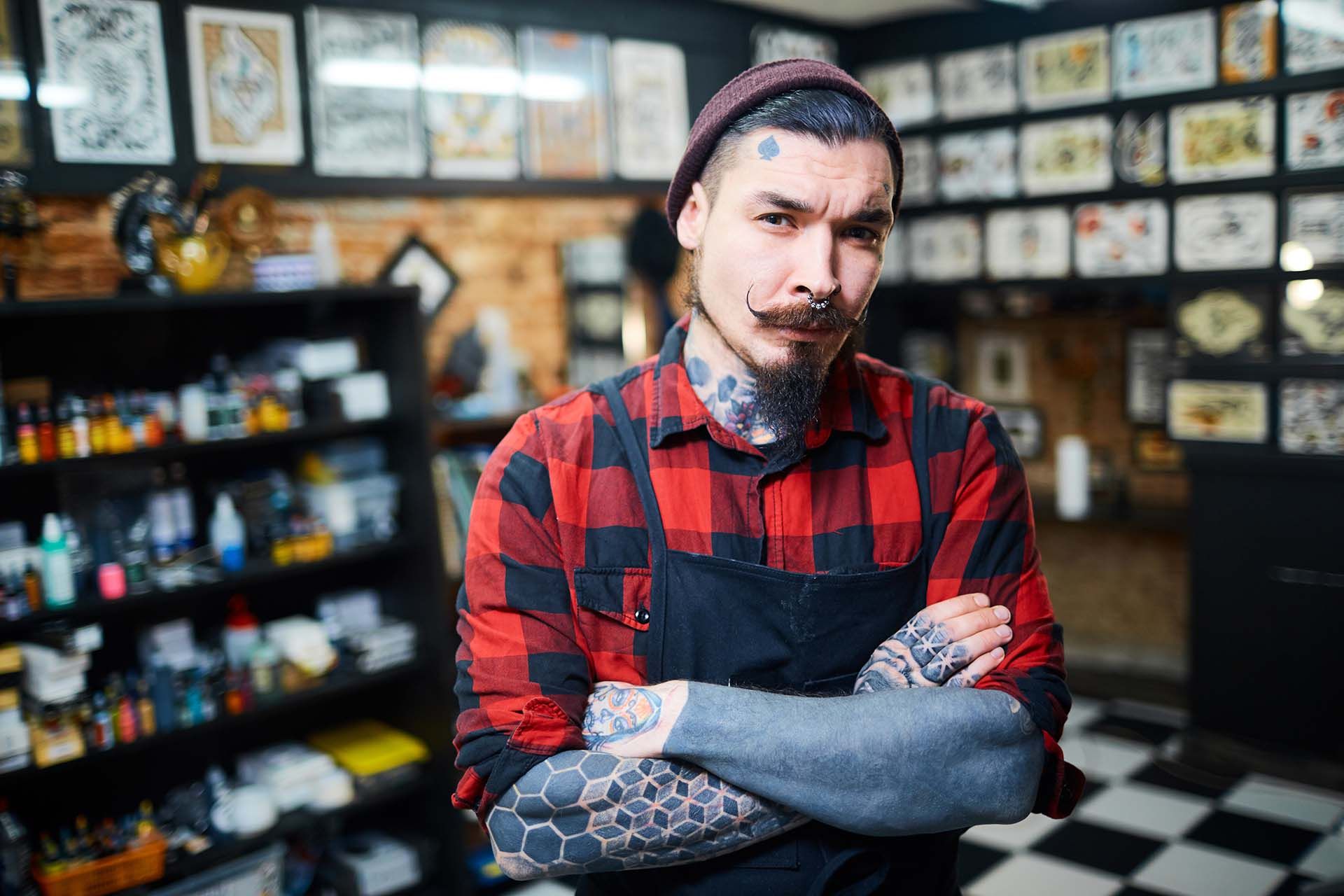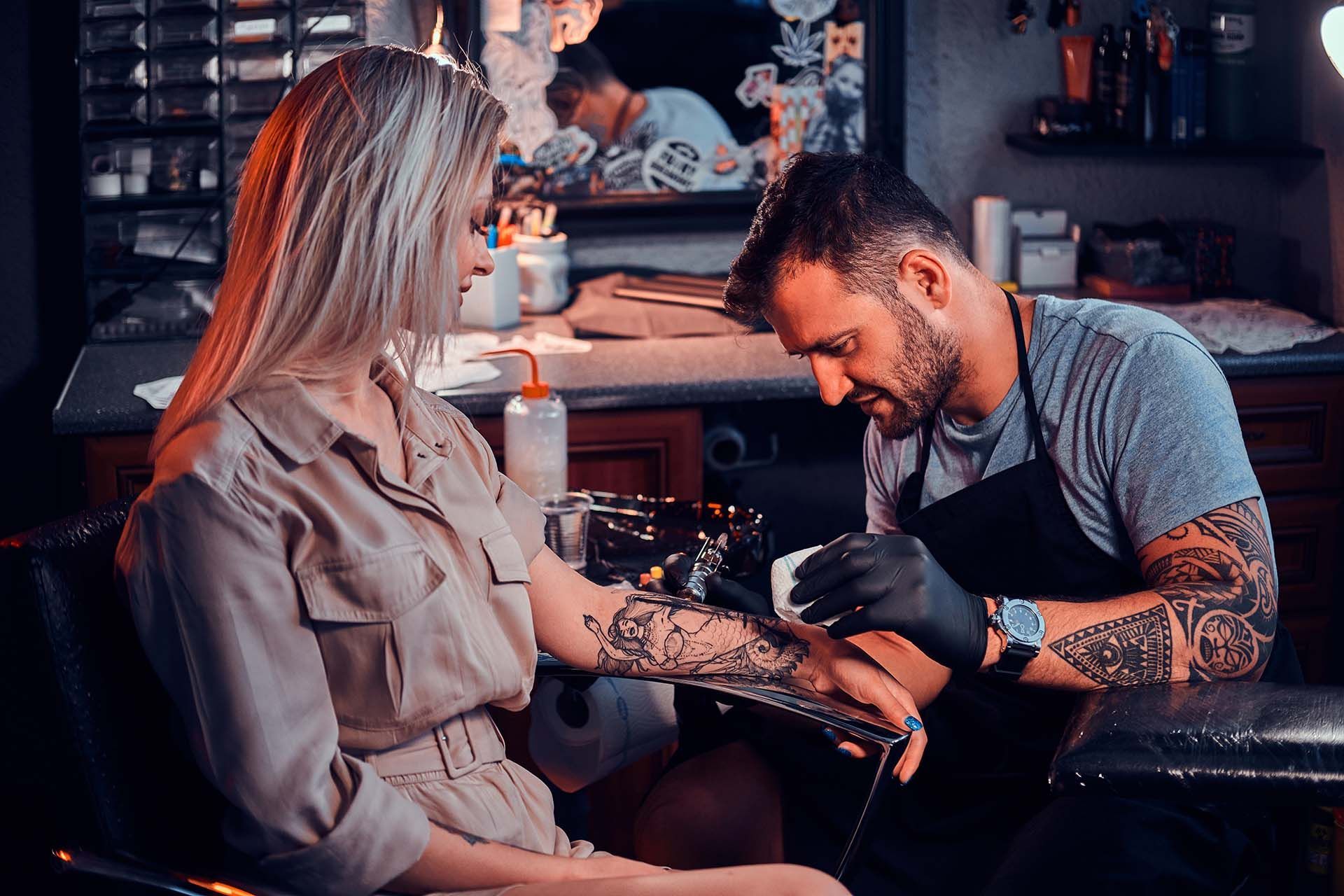How to Tattoo for Beginners
Starting a career as a tattoo artist is both exciting and challenging. It combines the precision of skill with the flair of creativity. But for those just setting out, the path is paved with learning, practice, and patience, which often leads to one burning question: How to tattoo for beginners? So, to help you through the process, we've created the following article to explore the fundamental steps, from mastering the art of drawing tattoos to understanding the essentials of safety and hygiene; we've covered it all. Let's get right into it!
Learning How to Draw Tattoos
Before inking your first piece, honing your drawing skills is fundamental. After all, a well-executed tattoo starts with a confident hand and a keen eye for detail, precision, and artistry. Here's a simple guide to learning how to draw tattoos:
Choose a Style to Master
Choosing a specific style to master in tattooing can be a pivotal decision for any tattoo artist. Much like how artists in other mediums develop their unique aesthetics, tattoo artists also strive to carve out their niche by perfecting a particular style. Let's take a look at a few of the popular tattoo styles and skills required to excel in each one:
Realism
Realism in tattooing is all about pushing the boundaries of artistry by bringing life-like images to the skin. This style demands an exceptional understanding of light, shadow, and anatomy. Therefore, if you plan to specialize in realism, you must possess a keen eye for detail to meticulously recreate intricate features, textures, and nuances in each design.
Traditional
The traditional tattoo style is a timeless classic, deeply rooted in the history of tattooing. This style is characterized by bold, black outlines and vibrant primary colors; think classic motifs like anchors, roses, and eagles. To become a master of traditional tattooing, you must not only be skilled in the technical aspects of the art but also have a profound appreciation for its rich heritage.
Watercolor
Watercolor tattoos are a relatively modern addition to the tattooing world, inspired by the fluidity and vibrancy of watercolor paintings. What sets this style apart is its use of color gradients and the absence of bold, defined outlines. Artists who excel in watercolor tattoos must be creative and innovative, as they approach tattooing more like painting on a canvas.
Find a Few Artists to Learn From
It's always beneficial to observe and learn from established tattoo artists. Identify a few whose work resonates with you. Study their techniques, their approach to different styles, and the finesse in their execution. Trust me, doing so not only provides inspiration but also aids in refining your own skills.
Choose One Medium and Stick with It
It’s easy to get overwhelmed by the many drawing mediums available when you are first starting out. But choose one, such as digital art, pencil sketching, or ink drawing, and stick with it. Mastering one medium provides a solid foundation, making it easier and more intuitive to transition to others.
Why Learn to Tattoo on Fake Skin?
As an aspiring tattoo artist, practicing on fake skin is pretty much a rite of passage, instilling confidence and precision in your craft. But like anything else, tattooing on fake skin comes with its own set of benefits and drawbacks. Here, each plays a crucial role in your preparation for the real-world challenges ahead. Let's take a closer look at the pros and cons of learning to tattoo on fake skin:
Benefits of Tattooing on Fake Skin
- Realistic Texture: Fake skin mimics the texture and elasticity of human skin, offering a realistic platform for practice.
- Error-Friendly: Allows for mistakes and learning without permanent consequences, enabling you to experiment and learn.
- Technique Refinement: You can hone various techniques, like line work, shading, and color filling, in a low-pressure environment.
- Portfolio Building: Create a tangible showcase of your skills to attract potential clients.
- Safety: It provides a hygienic and ethical way to practice without risking harm to yourself or others.
Drawbacks of Tattooing on Fake Skin
- Texture Variance: While it simulates human skin, the feel and response can still vary, requiring an adjustment when transitioning to real skin.
- Cost: Quality fake skin can be expensive, and while it's a worthwhile investment, it is an additional cost to consider.
- Environmental Impact: Used fake skins need proper disposal, and some materials may not be biodegradable.
- Limited Feedback: Unlike human skin, fake skin doesn't react to ink or needles, so artists might miss out on learning how real skin responds during tattooing.
Needle Depth - Getting It Right
One of the pivotal aspects that can significantly impact the quality of a tattoo is the depth at which the needle penetrates the skin. Get it right, and you're on your way to delivering crisp, long-lasting artwork; get it wrong, and you risk scarring, fading, or blotchy tattoos. Here's what you need to know as you master this critical component.
Understanding Skin Layers
Your skin is made up of three primary layers - the epidermis, dermis, and subcutaneous tissue. When tattooing, the needle should reach the second layer or the dermis, where the ink will be encapsulated by the skin cells, leading to a permanent design.
Ideal Needle Depth
Typically, the needle should penetrate about 1/16 to 1/32 inches into the skin. Too shallow, and the tattoo might fade quickly or appear uneven. Too deep, and you risk causing unnecessary pain, bleeding, and potential scarring.
Factors Affecting Needle Depth
- Skin Type: Everyone's skin is different. Some have tougher skin, while others may have softer or sensitive skin, so always adjust the needle depth accordingly.
- Tattoo Location: Moreover, different body parts have varied skin thickness. For instance, the skin on the forearm is thicker than that on the ankle, requiring adjustments in needle depth.
- Needle Type and Size: Different designs and effects (like lining or shading) require different needle types and sizes, which impacts the appropriate depth.
Tips for Perfecting Needle Depth
- Practice Makes Perfect: Utilize fake skin to get a feel for the right depth. It provides an opportunity to practice without permanent consequences.
- Seek Professional Guidance: Consider apprenticing with an experienced tattoo artist who can provide hands-on training and feedback.
- Listen and Feel: The sound of the machine and the feel of the needle on the skin can provide cues on whether you're at the right depth
Lining Skills - A Foundation of Tattoo Artistry
In tattooing, perfecting the art of lining is essential. In fact, it's a lot like sketching the skeleton of a building, as each line lays the foundation and shape of the final piece. Therefore, as an aspiring artist, your ability to create clean, precise lines will determine the clarity and longevity of your tattoos. Here, we will discuss the fundamentals of improving your lining skills.
The Significance of Lines
Lines in a tattoo aren't just functional - they're integral to the aesthetic quality of the piece. They define shapes, add structure, and can even influence how the human eye perceives the design's flow and balance. That said, a steady hand and an understanding of line weights and types are your allies in this stage of your journey.
Essential Tools for Lining
But it doesn't stop at learning to line because choosing the right equipment is also crucial. Why? Because different needles, from single needles for fine lines to multiple-needle configurations for bolder lines, play a pivotal role. The type of tattoo machine, ink quality, and even the grip can affect your control and the final outcome.
Techniques to Master
- Steady Hand Movements: Practice achieving steady, unbroken lines. Always remember the consistency in your hand's movement affects the line's quality.
- Line Weight Variations: Understand how pressure variation affects line thickness, as it's an essential skill for adding depth and dimension.
- Ink Flow: Mastering the appropriate ink flow is crucial to ensure the lines are saturated and consistent.
Practice and Progression
- Training and Exercises: Engage in specific exercises to improve hand stability and control. If you get discouraged, remind yourself that patience is key!
- Feedback and Improvement: Seek input from seasoned artists and be open to constructive criticism because every piece of advice is an opportunity for growth.
- Patience and Persistence: Remember, mastery takes time. So, every line drawn and every mistake made is a step closer to perfection.
Shading Techniques - Adding Depth and Dimension
Now that you've got the basics out of the way, it's time to advance to the next level: Shading. This is a vital skill to learn because shading adds depth, dimension, and life to your tattoos, transforming them from flat drawings to dynamic works of art. Here, we'll guide you through the essentials to refine your shading skills:
Understanding the Basics
Shading is not just about filling spaces; it's a technique that demands an understanding of light, shadow, and texture. Every shade you etch should contribute to the overall visual harmony and depth of the tattoo.
Tools of the Trade
The right tools are as vital as your technique. Different needles, like magnum needles for softer shading or round shaders for bolder gradients, will be your companions. Your machine's speed, the needle's size, and the ink's quality - all play a role in achieving the desired effect.
Essential Techniques
- Black and Gray Shading: To achieve a realistic look, it’s essential to master gradient effects, which smoothly transition from deep blacks to lighter grays.
- Color Shading: Learn how to seamlessly blend different colors, understanding the nuances of saturation and contrast to create vibrant, multi-dimensional tattoos.
- Texture Shading: Get familiar with techniques to mimic textures like skin, fur, or fabric, adding a touch of realism to your designs.
- Study Light and Shadow: Observe how light interacts with different objects and surfaces. This knowledge will inform your shading techniques, adding authenticity to your work.
Filling in Color - Bringing Tattoos to Life
Exploring the world of color tattoos is like entering a realm where your creations come to life in vibrant hues. It's where the essence of your designs is captured not just in shapes and shades but also in the vivid spectrums of color. In this part of the process, precision, patience, and knowledge about color theory and application techniques become your guiding lights.
Essential Tools
Just as with lining and shading, the right tools are critical for filling in color. The needles, the machine's speed and power, and, of course, the quality of the inks all play pivotal roles. Therefore, knowing when to use a liner or a shader or how to adjust the machine for optimal ink flow becomes integral to filling in colors with precision and consistency.
Key Techniques
- Layering: Learn how to apply multiple colors of ink without damaging the skin. This is about depositing ink efficiently to ensure vibrancy and longevity.
- Blending: Master the technique of blending edges and transitions smoothly to create a seamless, multi-dimensional look.
- Saturation: Understanding how to achieve optimal color saturation is essential to ensure the tattoo remains vibrant over the years.
Staying Clean - A Pillar of Professional Tattooing
Let’s face it; hygiene and cleanliness are essential partners to your artistic skills. Each stroke of ink must be accompanied by strict hygiene practices to prevent infection, promote healing, and maintain the integrity of your work. Thus, understanding, respecting, and implementing cleanliness is a non-negotiable aspect of professional tattooing.
Essential Steps to Maintain Cleanliness
- Sterilization of Equipment: Every piece of equipment, from needles to machines, should be thoroughly sterilized before and after use.
- Personal Hygiene: As an artist, ensure your hands are clean and you're adorned in appropriate attire, including gloves.
- Clean Workspace: Maintain a sanitized workspace. A clean environment is pivotal to preventing contamination and infections.
Finding the Right Gear - Equip Yourself for Success
Your gear matters just as much as your artistic skills. Therefore, it's not an afterthought; it's an essential part of your toolkit. Your gear should enhance your abilities, help you work with precision, and ensure safety and hygiene. But finding the right gear can be challenging with so many options on the market, so here’s what to know:
Criteria for Selection
- Quality: Opt for gear that is renowned for its quality. The durability, precision, and safety of your equipment are paramount.
- Ergonomics: Your comfort is crucial. Consider the grip, weight, and maneuverability of the tattoo machines and other tools.
- Hygiene: Equipment should be easy to clean and sterilize, aligning with the cardinal rule of maintaining impeccable cleanliness.
Trial and Error
- Experiment: Don't hesitate to try out different brands and types of equipment. What works for one artist might not be suitable for another.
- Research: Stay informed about the latest trends, technologies, and innovations in tattooing gear. Because, after all, knowledge is power in making informed choices.
- Seek Recommendations: Tap into the wisdom of seasoned artists. Their experience can provide invaluable insights into selecting the right gear.
Start Tattooing Today!
Well, there you have it! You've got the tools, the skills, and the passion - now, it's all about putting in the work. Keep it clean, respect the craft, and remember - every pro started as a novice. So, ink with confidence, learn from every line and let your work speak for itself.
Disclaimer: This publication and the information included in it are not intended to serve as a substitute for consultation with business consultants and professionals. Specific business, financial, legal issues, concerns and conditions always require the advice of appropriate professionals. Any opinions expressed are solely those of the participant and do not represent the views or opinions of this company.










